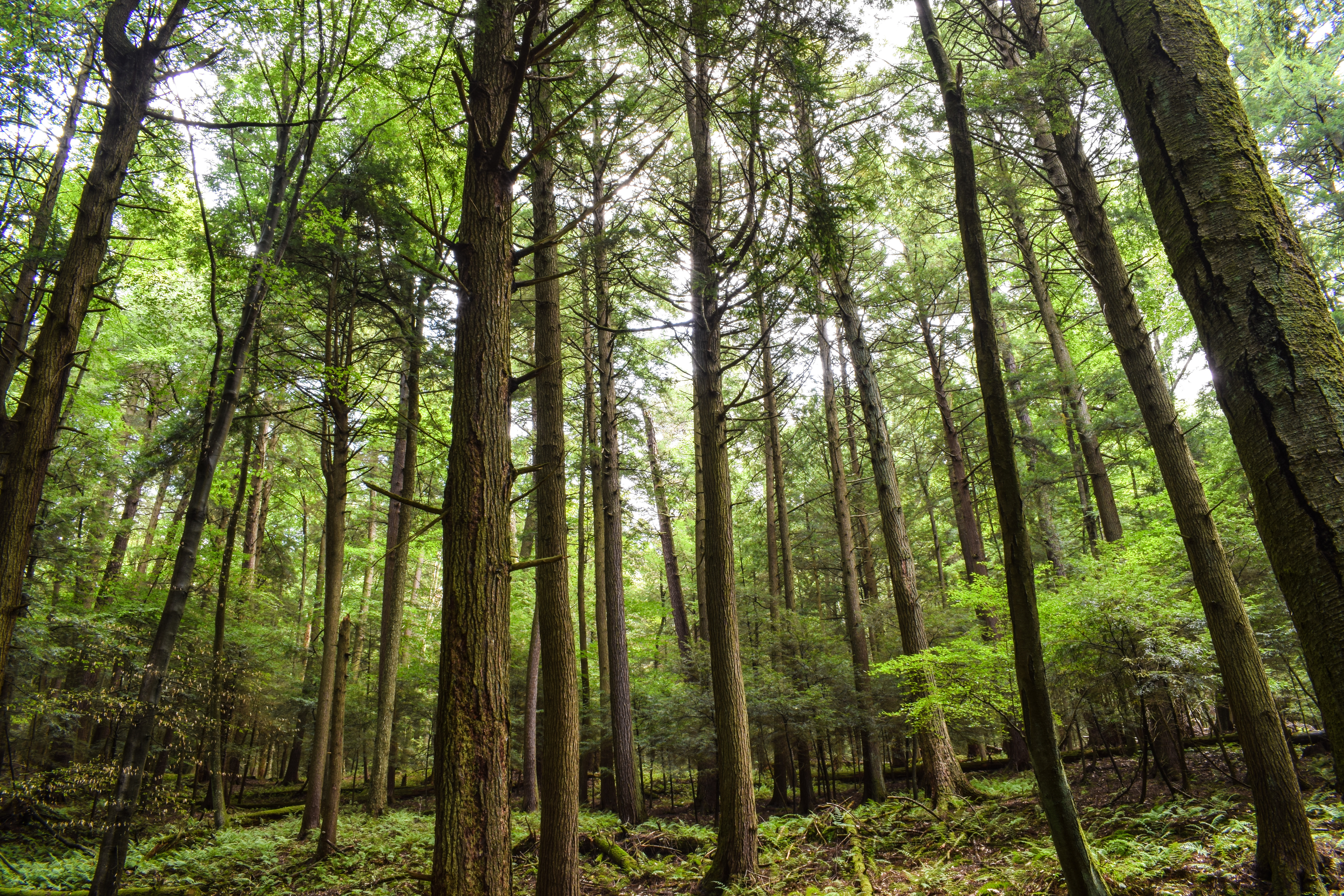While there are many reasons to enjoy woodland ownership, paying taxes on your property and the income you derive from them certainly aren’t among them. Making sure that you take every tax break to which you’re entitled can make the process slightly less painful.
In this article we’ve included several possibilities for tax savings. While most are focused on federal taxes, your state may also have some tax deductions and programs that could reduce your tax bill. In either case, remember that tax laws are complex. It’s always a good idea to discuss your specific tax situation with your accountant, your lawyer, or your tax professional.
To access the additional resources listed in this article you'll need to sign up for a free MyLandPlan.org account. This free account will give you access to a wealth of educational content, the ability to map your land, set goals, and keep a journal about what you observe on your property.

1. Deduct your Forest Management Expenses
Your expenditures can add up quickly when you’re taking care of your woodlands. You may be able to recover some of those costs through tax deductions.
There are two types of expenses:
Operating expenses include items and services that you use in the day-to-day management of your land: fertilizers and herbicides, tools with a short lifespan, and activities like prescribed burns. Property taxes are also considered an operating expense.
You can deduct operating expenses on your tax form every year.
Capital expenditures involve money that you’ve spent or invested in your woodlands for a longer-term improvement in its value: purchasing and planting new trees, building a road, the purchase of equipment (like a tractor) that you will be using for several years, and buying more land to add to your property.
The deductions for capital expenditures are generally spread out over several years, but in some cases, you may not recover your costs until you sell the property. (See suggestion #3, capital gains.)
If you’re growing timber to make a profit, you’re considered a business and can deduct both operating and capital expenses, even if they exceed the amount of money you make in a given year.
If you’re not growing timber as a business, your expenditures are considered part of your hobby. Your deductions can’t exceed the amount of money you earn from selling timber that year.
2. Claim the Reforestation Tax Benefit

It’s expensive to plant new trees in an area that was previously cut, or to reforest land previously used for growing crops. You’ve got the cost of the seeds or seedlings, the labor to plant them, and expenses for tools, herbicides, and fencing to protect the new trees.
Under the federal tax code, owners of qualified woodlands can deduct up to $10,000 in expenses each tax year. You can also amortize any qualified expenses above this amount over an eight-year period.
To qualify, your woodland must be located in the U.S. and must be used to grow and cut timber that’s used for commercial products. At least one acre of the property has to be managed and planted according to standard practices. Your land won’t qualify for this deduction if you’re growing Christmas trees or ornamental trees, or if you planted the trees as a windbreak.
Individuals and corporations can take advantage of both the $10,000 tax deduction and the amortization of additional costs. Land held in a trust qualifies for the deduction but not the amortization.
To obtain the maximum tax benefit, consider staggering your activities over two different years. For example, prepare your land for reforestation in the fall, and then do the actual tree planting the following spring. (Click here for an example of what this might look like on MyLandPlan.org)
To claim your tax benefits, you’ll need to fill out a specific tax form and include a statement containing:
-
a description of your costs and the dates you incurred them
-
a description of the type of timber you grow on your land and the purpose for which you grow it
3. Claim Timber Income as Capital Gains
You may be accustomed to designating any profit you make from the sale of your timber as income. But there may be a better option – treating it as a capital gain. The advantage here is that capital gains are taxed at a much lower rate than ordinary income, currently under 20%. Plus, you don’t have to pay self-employment tax (15.3%) on the money you have earned.
In order to treat your sales proceeds as capital gains, you must have held the property for at least a year. If it was a gift, you and the gifter must have held it for a year. If you inherited the property, that one-year requirement is waived.
Instead of paying the tax on your profit each year, as you would with ordinary income, you pay the capital gains tax only when you sell the property and/or you’ve harvested the timber on it.
Unfortunately, this isn’t a simple process. First, you have to calculate your basis – the value of the land and timber when you first purchased or received it. (Click here for a helpful guide on calculating your basis.) In addition, the capital gains designation can only be applied to the sale of standing timber. So when you’re harvesting your trees, the sale has to be broken into two transactions. You sell the standing timber at fair market value, and then sell the logs after they’ve been cut.
The capital gains approach does take more time and require more calculations, but could save you a significant amount of money. You have to decide whether it’s worth the additional time and effort to check it out. Click here for more information on calculating your capital gains.
4. Set up a Conservation Easement
Establishing a conservation easement on your woodlands could keep it safe from future development and provide you with tax relief.

Under a conservation easement, you sign a voluntary, legal agreement with a government agency or a land trust that restricts development and certain industrial and commercial activities on your property. The land is still yours, and you can live on it, sell it, or pass it on to your heirs.
When you sign a conservation easement, you’re reducing the value of your land because you limit its potential uses. If your land meets the IRS criteria listed below, you might be able to deduct from your tax bill the difference in the value of the land before and after you sign the conservation easement agreement.
Your conservation easement must be considered a charitable donation with a conservation purpose, such as:
-
The preservation of land areas for outdoor recreation by, or the education of, the general public
-
The protection of a relatively natural habitat of fish, wildlife, or plants, or similar ecosystem
-
The preservation of open space (including farmland and forest land) either for the scenic enjoyment of the general public or pursuant to a clearly delineated government conservation policy
-
The preservation of a historically important land area or a certified historic structure
Your easement must also be permanent—all future landowners must be bound by it—and it must be donated or sold for less than its fair market value. Depending on which conservation purposes you claim, there may be a requirement for public access to your property as well.
The land must be donated to a public agency, private organization or non-profit group that also meets specific requirements. Due to the growing use of conservation easements, the IRS has been scrutinizing these agreements more closely, so check with your tax advisor for the latest information.
How to claim a conservation easement deduction »
5. Enroll in a Current Use Program
Your state’s property taxes are usually based on what your land would be worth if it were developed for residential or commercial uses. With current use programs, states calculate your tax bill based on how you’re actually using the land now.
Landowners sign up for the programs, which vary from state to state, and promise not to use it for commercial or other purposes for a specific period of time in return for a tax break. The tax savings they realize may enable forest owners to keep their woodland instead of having to sell it to pay the tax bill.
Click here for some questions you’ll want to consider before entering a current use program.
The government doesn’t make it easy to save money on your income and property taxes. But if you’re willing to spend some time and money to investigate your options, you may be pleasantly surprised by the results!
Although WoodsCamp is a valuable tool for landowners, we’re not tax experts, so you’ll want to consult your tax professionals if you have questions on any of the topics above.
On the other hand, WoodsCamp IS great at is connecting landowners in Florida, Georgia, Pennsylvania, South Carolina and Wisconsin with the resources they need to keep their woods healthy and thriving.

Curious what programs or services your land is eligible for?
Find your property on our map and request
a free woodland report today!
*This post was written by Mary Lou Jay, a regular contributor to WoodsCamp blog and AFF's WoodLand Magazine.




We want to hear from you.